Happy almost holiday season, Bagel Babes! If you’ve been following me over on Instagram, you know I’ve been very into seasonal living lately – which means this year I’ll be celebrating the pagan Christmas holiday, Yule!
This holiday season, I’m bringing contributors on to the blog to showcase their awesome writing skills and add new perspectives to B&B. First up is Angela Myers!

Angela Myers runs a digital marketing agency specializing in social media and SEO copywriting. Along with this, she creates bookish content, provides literary lifestyle advice, and reviews books on her Angela Anne platform across social media. She can usually be found in a coffee shop or bookstore.
Angela doesn’t have her own blog – yet. She runs a digital marketing agency specializing in social media and SEO copywriting. Angela also creates bookish content, provides literary lifestyle advice, and reviews books on her Angela Anne platforms on Instagram, TikTok, and Youtube. She can usually be found in a coffee shop or bookstore.
So, what exactly is Yule?
Yule is one of the eight pagan holidays-and it’s almost Yule time! With many major religions having holidays near the end of the year, December is often a cozier, slower month full of time with friends and family. The pagan Christmas holiday is no exception to that!
Despite similarities to other major holidays in December, the pagan Yule does have its own customs. In this guide, learn how to celebrate the pagan Christmas holiday, Yule, to add extra coziness to your holiday season. We’ll go over the history of paganism, eight Yuletide traditions, two traditional recipes, five Yule decor ideas, and four Yule gift ideas.
While I don’t personally celebrate the pagan Christmas, I am an avid history lover who enjoys researching countercultures and stories lost to mainstream historical narratives. This love drew me to researching the cultural history of Yule (and those who still celebrate it today!). One particularly interesting element is how similar many pagan traditions are to Christian and secular holiday traditions.
Even if they are similar, there are some distinct differences. This guide goes over how to more accurately celebrate the pagan Christmas holiday, Yule. And fear not. These changes are easy to implement-you might be celebrating with some of these traditions already!
What is paganism?
The idea of paganism is a general term which can be used to refer to many non-Christian cultures ranging from the vikings to the Aztecs. The beliefs of pagans vary wildly and it’s important to respect the entire spectrum of pagan beliefs instead of type-casting based on inaccurate historical fiction stereotypes from shows like Reign and the Last Kingdom.
For this blog, we’ll be discussing pagans who follow European customs which are not attached to one of the major world religions. Yule is a common pagan celebration in Europe which has since spread all around the world.
Generally speaking Yule lasts December 21st until January 1st, though this can vary based on culture. Because the pagan end of year festivities usually lasts 12 days, it’s where we get the idea of the 12 days of Christmas!
The history of the Yule/pagan Christmas
The 12 Days of Christmas isn’t the only thing Christianity stole from the Pagan winter festivals. In fact, there is a lot of overlap!
While the pagan festivities usually last around 12 days, Yule is commonly associated with December 21st or the winter solstice. Yule is celebrated within modern day wicca, but also has a deep cultural history.
The word Yule is traceable to an old Germanic language and is still used to refer to Christmas in Nordic regions. The holiday is also considered to be Germanic or Nordic in origin and was celebrated for centuries before the Christian church created Christmas in the 11th century A.D.
Yule started as a celebration to honor the Gods, land spirits, and ancestors and to ask for protection during the colder, deadlier months. While the weather outside is frightful in December, Yule is a bright, vibrant celebration of the past year and new beginnings in the year ahead.
When Christians began to spread their religion further across Europe, they adapted certain traditions from conquered pagan people to make converting to Christianity more enticing. Along with adapting many Yuletide activities and traditions, they also decided to place the birth of Christ at the same time of year as Yule.
However, early Christians did not want anyone to consider this new holiday to be the same as Yule or practice pagan traditions during Christmas.
Early Christians tried to emphasize the darker elements of Yule, such as Krampus, a half-goat, half-demon who punishes naughty children, to try to demonize the religious beliefs of pagans. For a long time, pagan Christmas was seen as dark and evil.
Yet in many nordic countries today, people are starting to reclaim Yule and the old pagan traditions. These traditions are not at all evil or demonic. In fact, the entire idea behind pagan Christmas is to celebrate the light’s victory over the dark as the days start to lengthen again.
Pagan Christmas is an upbeat celebration of hope, new intentions, and good fortune for the upcoming year.
Yule/pagan traditions celebrated In christianity
As you might imagine given the shared history of Christmas and Yule, many pagan traditions have found their way into modern and secular celebrations of Christmas.
Yule celebrations included feasts with ham and setting intentions to better serve the gods in the new year. These traditions have transformed into the Christmas hog and New Years Resolutions. Other features which had pagan origins include Christmas trees, giving gifts, and Christmas caroling.
In fact, if you’re used to celebrating a more secular Christmas (or even a Christian one), you’ll be surprised just how many pagan traditions are familiar to you!
Other traditions for the Yule have been lost over time (at least in mainstream culture). Some of these include:
- Worshipping House Spirits: spirits and minor gods who protected a home and everyone who lived in it during the cold months. House spirits have no popular fantasy creatures they are similar to.
- Krampus: a half goat, half demon figure who kept naughty kids in line.
- Bringing back sticks: to help fend off the winter blues, part of the Yule was to go outside and find a stick in the woods. Pagans would bring the stick back inside as a way to ward off negative feelings and spirits. The stick was intended to improve one’s mood throughout winter.
Traditions adapted in Christian and secular ceremonies and those unincorporated can become a magical part of your own holiday celebrations.
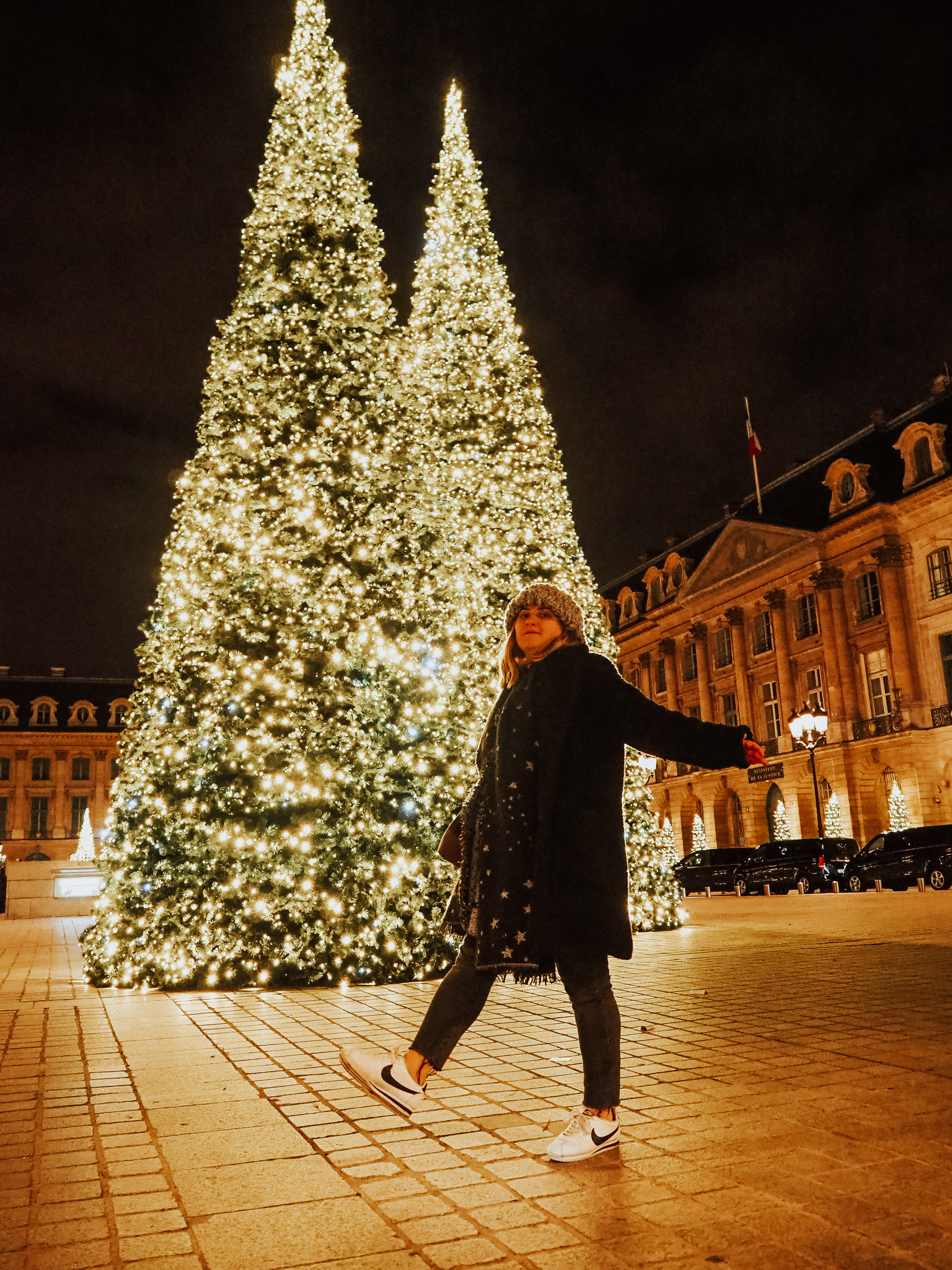
Common Yule traditions
Like any major holiday, there are specific activities and traditions that are associated with Yule. These eight Yule traditions can provide coziness and clarity to your end-of-year celebrations. For more Yule activities, check out ten more Yule traditions to do this year (our blog post going live on 11/11/21!).
1. The Yule log
Intentionally looking ahead to the new year and reflecting on the past one is at the heart of Yule.
To look ahead to the new year, you could burn a Yule log. While often compared to the Christmas tree, it was used for a very different purpose…unless you burn your Christmas tree.
It was usually a big, chunky piece of wood which was burned over the fire throughout the festivities. The Yule log symbolized releasing the old and making room for the new. It would also ward off bad spirits and prevent sickness and disease for the new year.
The fire from the Yule log also reminded pagans of the fight between the evil Holly King and the Sun God. The Holly King wants to plunge the world into darkness every year, but the Sun God fights and defeats him every year on the winter solstice. From then on, the days begin to grow longer. Fires, as well as lighting candles, symbolized the return of the Sun God to many pagans living in pre-Christian Europe.
While you can simply find a log to burn in the fireplace as your yule log, there’s also the opportunity to decorate the log before burning it or to decorate your fireplace with traditional pagan Christmas decor.
If you want to get fancy with your Yule log, the Hallmark channel has a great carving tutorial, though they do state it’s meant for intermediate carvers and crafters.
2. Reflect and set intentions
Along with the Yule log, a key practice to prepare for the new year is time for introspection. Pagans will often use their holidays as a time to reflect back on the past year and set new intentions for the upcoming year.
With your Yule log burning in the fire, take out a journal or laptop. Reflect back on the past year and set your goals and intentions for the upcoming one.
One of my favorite end of year reflections is to write ten bulleted lists in my journal. The prompt is:
- 10 highlights of the past year
- 9 lowlights
- 8 lessons learned
- 7 influential people
- 6 things that made everything better
- 5 good books
- 4 ways I invested in my future
- 2 things that used to be hard and are now easy
- 1 thing that could have made the year better
When you’re setting intentions for the next year, it’s important to keep them realistic. If you’re looking to improve your health next year, check out Blondes & Bagels guide to setting realistic new year fitness goals.
Because the pagan religion emphasizes the natural world and our connection to nature, it might also be a good idea to consider how you can spend more time in nature during the upcoming year. During Yule, people would begin to plan which crops to plant on their farms and how they could still spend time outside and in sunlight in the upcoming cold months of January and February.
While many of us today don’t have a farm, we could still schedule in more time for nature. This could look like planning winter hikes to go on or buying a houseplant for your home or apartment.
3. Do a Yule meditation
The winter solstice is the shortest day of the year so after it, each day will become longer than the one before. Part of Yule is celebrating this return of sunlight, which for many is a spiritual blessing. One way to lean into the spiritual side of Yule is to meditate on its meaning.
If you’re interested in a guided Yule meditation, check out this 14 minute guided meditation on Youtube or this 11 minute guided meditation.
If you prefer to meditate without a guide (i.e. no words while meditating), you could meditate with nature sounds in the background or use this instrumental 32 minute mix of Yuletide carols for meditation.
If meditations aren’t your vibe, you could also say a Yule incantation. Here are two incantations from the book Yule: Rituals, Recipes, and Lore for the Winter Solstice.
Invocation to the Old Woman of Winter
Ancient mother of Midwinter
watcher over life and death,
the one who rebirths the world,
be with us on this longest night!
See us through the dark hours
and stand with us
as dawn births the promise of new life.
So mote it be!
Invocation to Father Yule
Heroic father, giver of life,
one who stands with sword in hand
to fight against the dangers of the wild,
bring that sword into our circle
and stand with us against this night’s darkness.
For the night is long,
and you will keep us safe.
4. Christmas trees
Christmas trees, while popular today, actually originated in the pagan culture! While many other trees lost their leaves, evergreens remained the same. They symbolized that even in the darkest of times, there is hope and life to be found.
While Christians, secular celebrators, and pagans all have Christmas trees, they decorate them differently. If you want to add some more pagan decor to your Christmas tree, consider cinnamon ornaments with shapes etched in icing.
You can even DIY this yourself. Here’s an easy set of instructions to make Yule ornaments in a couple hours:
- Start with circular wooden discs, such as these from Michael’s. This particular set comes with twine and you will want to make sure you have something to hang your wooden ornaments from if you buy a different set. If you get this set from Michael’s, you might also want to use decorative ribbon instead of twine to add some flair.
- While the designs were traditionally in icing, that might attract bugs. An alternative would be to use a white or cream colored paint. You could also carve shapes into the wood with a knife. Once you’ve decided on your preferred decor material, it’s time to get to work creating the ornaments.
- Draw, paint, or carve your desired shapes and decor onto each wooden disc. You can either do Christmas symbols or traditional pagan symbols.
- If using paint or icing, set them out overnight to dry.
- Drill holes into each wooden disc if the set you buy doesn’t already come with holes and thread with ribbon or twine.
- Hang up your new ornaments on your tree!
If you’re like me and you like contrast in your Christmas ornaments instead of all of them looking the same, there are other pagan items you can add.
Pagans often add magical items to their Christmas trees as well as ornaments. If you want to decorate with more magical decor, you might consider hanging these on your tree:
- Tarot cards
- Herb satchels
- Crystals
- Bells
5. Go wassailing
While it was a popular tradition in renaissance England, wassailing’s roots can be traced back to the pagan people who first settled on the British Isle.
To understand this activity, we must discuss both the verb (wassailing) and the noun (wassail).
Wassail is a popular hot cider to be enjoyed around the holidays. The act of wassailing is bringing that cider around to friends and neighbors in exchange for gifts.
Similar to Christmas caroling, those who went wassailing would go door to door with the drink and offer it (and perhaps a yuletide carol too) in exchange for gifts.
If you want to make your own wassail, you need:
- Apple cider
- Pineapple juice
- Cranberry juice cocktail
- An orange
- Cinnamon sticks
- Whole allspice berries
- Cloves
The wassail can be made in five easy steps:
- Combine the apple cider, pineapple juice, and cranberry juice cocktail into a pot
- Cut the orange up into slices
- Place the orange slices, cinnamon sticks, cloves, and whole allspice berries either directly in the apple cider mix or in a muslin pouch
- Bring the mixture to a boil. Reduce heat and simmer for 15-20 minutes.
- Remove the orange slices and spices before drinking.
For more in-depth directions and to see where I got this recipe from, check out this blog.
6. Carve traditional runes
Ruins are commonly inscribed on wood in the pagan religion to bring good fortune and to ward off evil spirits. Before burning the Yule log, it is common to carve ruins on it. You could also carve ruins on other decorations, such as homemade ornaments or signs around your home.
Some common ruins used around this time of year are:
- Fehu for luck and wealth
- Ingwaz for new beginnings and positive life changes
- Algiz for protection against the dangers of cold weather
- Dagaz for happiness and hope
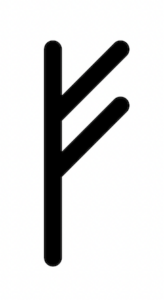
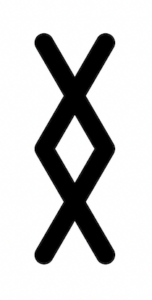
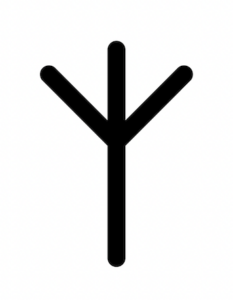

If you don’t want to carve the ruins into wood, you can draw them on paper and burn them over the Yule log. The burning of ruins activates them so your home is protected and you attract what you want into your life.
7 Plan Your Herb Garden – H3
A common practice during the Yule season was to plan the crops for the next year. The most important part of a farm or garden in pagan tradition is the herbs. Along with their many health benefits, herbs also serve a spiritual purpose. In fact, planning one’s herb garden was the most important agricultural aspect to plan during yule.
If you’re like me and not a skilled gardener, they’re also easy to grow. Herbs also can be grown inside or on balconies if you don’t have a backyard.
Some easy to grow herbs with spiritual meaning include:
- Rosemary: blesses and purifies your space
- Mint: provides protection and good health
- Parsley: symbolizes joy and victory
- Oregano: symbolizes happiness, freedom, and safe travels
- Thyme: provides bravery and courage
- Dill: welcomes good spirits into your space
- Chives: offers usefulness and insight
- Lemongrass: aids in communication and good health
- Basil: generates cheer and happiness in your home
If you’re not into growing your own herbs, many of these can be bought at the grocery store and used to flavor your food, perhaps to even flavor your yuletide feast.
8 Drink Herbal Tea – H3
While planning ahead is a big part of the Yule festivities, it’s also a time to reflect and enjoy last year’s yield. A common drink to celebrate last year’s crop yield is herbal tea.
Herbal teas have soothing and healing qualities. They can be enjoyed with friends and family or on a cozy, winter’s night with a good book.
Some of my favorite herbal teas are:
- Mint tea: provides clarity and alertness (especially peppermint tea)
- Tulsi tea: improves your mood and provides energy
- Rosemary tea: improves your memory and reduces inflammation
- Lavender tea: calms the body and reduces stress
If you’re interested in making your own herbal teas, Feasting at Home has a great guide on how to make brain booster tea, calm and sleepy tea, and happy liver tea.
Common Pagan Christmas Foods – H2
A big part of a yuletide festival is the feast! While wassailing is a great drink, it’s not a meal. You can, however, prepare your own feast to go with it! Honey Butter Yule Ham, a traditional pagan dinner and winter solstice cookies, a traditional dessert, will make your holiday celebrations more tasty!
Honey Butter Yule Ham – H3
Pagans often sacrificed animals around this time of the year and then feasted on their sacrifice. The most commonly sacrificed animal around this time was a hog, which then became a yuletide feast to be enjoyed with friends and family.
For this recipe you’ll need:
- 1 bone-in ham
- ¾ cup of softened butter
- ¾ cup of honey
- ½ cup of cloves
The Honey Butter Yule Ham takes ten minutes to prepare and four hours to cook. The basic instructions are:
- Preheat the oven to 350 degrees F
- Cut criss crosses into the flat side of the ham
- In a small bowl, mix the honey and butter. Slather on ham and insert cloves into ham if desired.
- Place in a roasting pan and bake for four hours. The internal temperature needs to reach 160 degrees F. Baste every 20 minutes as it cooks.
For the full recipe, check out the original recipe.
If you’re a vegetarian like me, you might want to skip this dish, though the softened butter, honey, and clove combo could go nice over a meatless alternative.
Winter Solstice Cookies – H3
Want a yule dessert to soothe your sweet tooth? Here’s a Pagan spin on the traditional holiday cookie.
For this recipe you’ll need:
- 1 cup of all purpose flour
- ½ cup of unsweetened cocoa powder
- ½ teaspoon of baking soda
- ¼ teaspoon of baking powder
- ⅛ teaspoon of salt
- 1 stick of butter, softened
- ½ cup of lump free brown sugar
- ½ cup of white sugar
- 1 large egg
- 1 teaspoon of vanilla extra
- Caramel Syrup
When you make the cookies, make sure to have a cookie cutter in your desired shape nearby. Since these are winter solstice cookies, snowflakes might be fun!
To make the winter solstice cookies:
- Stir together flour, cocoa powder, salt and baking soda. Set aside.
- Beat the butter and sugar until it is smooth but not fluffy. Mix in egg and vanilla.
- Add the flour mixture and butter mix using a hand mixer on low to combine them.
- Form it into a log.
- Wrap the dough in plastic wrap and chill overnight.
- Line cookie sheets with baking parchment and preheat the oven to 350 degrees F.
- Cut the log into ¼ inch thick slices. It’s ideal to bake them in batches of 2-3 cookies if possible.
- Bake the cookies for 10-12 minutes, rotating halfway through.
- Drizzle the caramel over the cookies and serve!
Check out the full recipe for more detailed instructions and how to make homemade caramel if you’d like to make it instead of buying it.
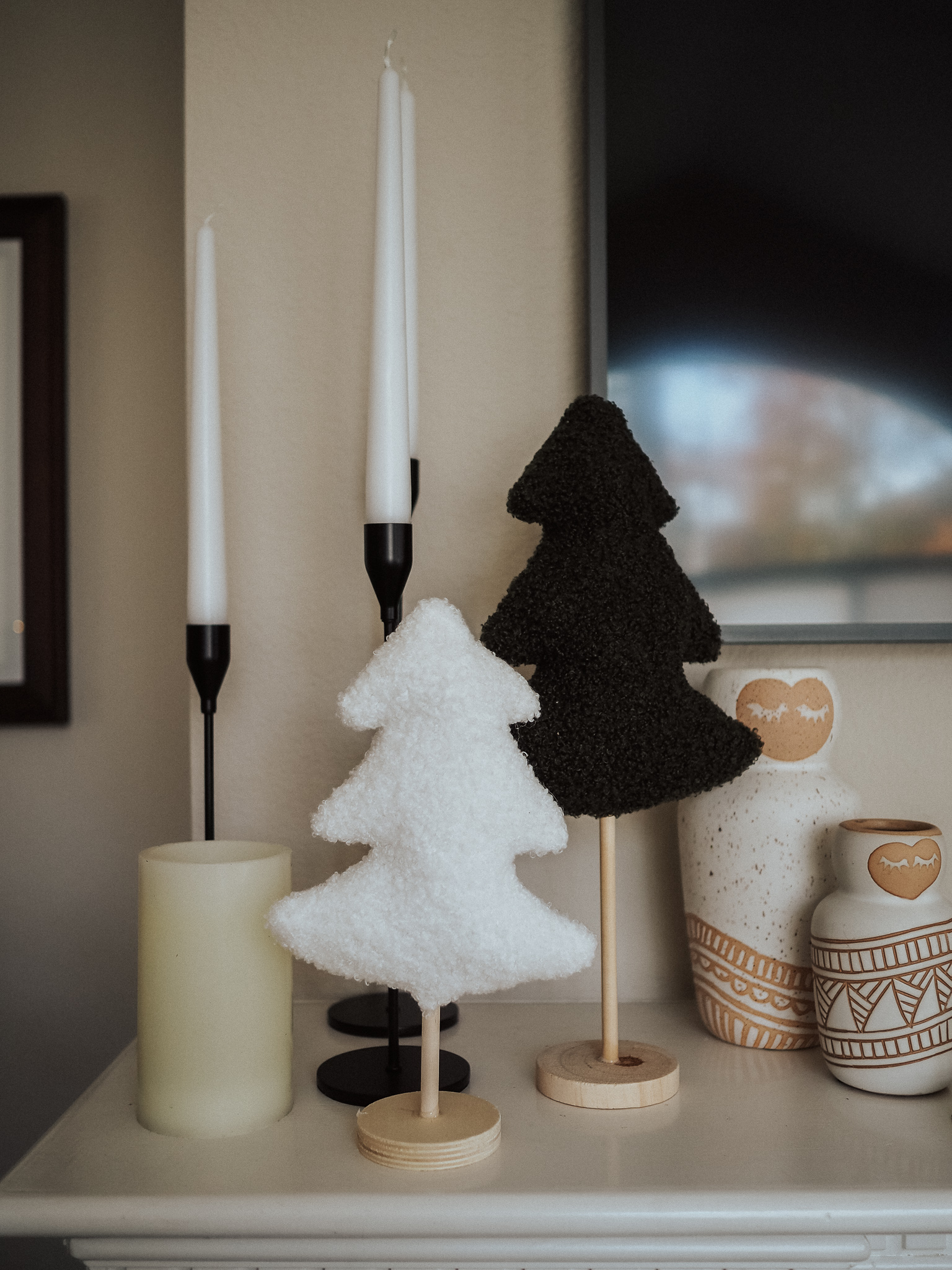

Yule decor ideas
Yule is one of the coziest times of year and this is reflected in traditional decor ideas. Check out these five pagan Christmas decor ideas to bring holiday cheer into your living space.
1. Yule goat
The Yule goat was a common Pagan symbol around the winter solstice. While the symbol of the goat was seen as dangerous by some Christians in the 12th-19th centuries, it is now being reclaimed as a cultural symbol to many Nordics. In many Nordic countries, the Yule goat is a common symbol and a larger effigy is put up in many towns.
While Pagans used the goat in their decor, it was also a costume many would wear near the yuletide. Pagans used to have a tradition where a man would dress up as the Yule goat and enter the household. He would be killed by the children and then symbolically come back to life the next day, symbolizing the cycle of life and the seasons.
So why decorate with goats and possibly dress up as one?
It’s meant to symbolize the rebirth of the sun during the winter solstice. Although Christians gave it a bad reputation as a demon, it has been reclaimed as a helpful figure in Yule/Pagan Christmas celebrations today.
Want to add some goats to your yule decor? Here are some ideas for inspiration:
- Hang a goat ornament like this one
- A Christmas Goat sign like this one
If you want to stick to tradition, purchase a wooden goat statue like this one. Still today in many parts of Sweden, towns build wooden goat effigies for the holidays (but don’t worry the one I found is big enough for your table, not the center of a town).
2. Yule log
As previously mentioned, the Yule log was a way to cleanse your household and protect against bad health in the upcoming year. It is one of the most common symbols of pagan Christmas and a great decor piece!
Because the Yule log is such a big part of pagan Christmas, it is common to decorate around the fireplace. Many households to this day still put up stockings on their fireplace even if they celebrate the Christian or secular Christmas. While you can put up stockings, you can also decorate with traditional yule decor.
A warm, well-decorated fireplace can also be a great greeting to any visitors during the holiday season.
You could include symbols of nature to your fireplace such as:
- Antlers
- Red berries
- Evergreen leaves
- Pinecones
- Oranges, apples, and other winter fruits
Green and red are also traditionally associated with this time of the year so you could add those to your fireplace as well.
If you practice magic, you might have an altar. Moving the altar close to the fireplace was a common practice during this time of the year. You can also decorate it with traditional decor for the Yuletide season.
3. Lights
Pagan Christmas is a celebration of the light and welcoming in longer days (even if a couple months of cold, long winter nights lie ahead). Because of this, candles and other forms of light are a big part of yuletide decor. Candlelight is more commonly used in pagan Christmas decor than electronic lights.
You could also include the symbol of the sun in your decor. Oftentimes, pagan households would keep the symbol of the sun around their home during this time of year to remind themselves that the days would start growing longer and that time in sunlight is important and healthy, even in winter.
This sun ornament might make a great addition to your tree–and it’s under $10.
4. Yule wreath
A wreath is a great way to welcome people into your home. Since pagans believe spirits and gods are more active during the colder months, they wanted to have a wreath to welcome helpful spirits and gods into their home. It also warded off bad spirits from entering the home.
A traditional Yule wreath includes pinecones, red berries, and other natural winter decor. You could also add some traditional pagan symbols to your wreath, such as the sun or the Pagan star.
If you want to make your own Yule wreath, check out this easy DIY option.
5. Mistletoe
While commonly thought to be a Christian decoration, mistletoe actually has pagan roots. It was connected to the legend of Freya, the Nordic goddess of love and lust. Some pagans believe that if you kiss under mistletoe, you are put under a spell to fall madly in love with the other person.
If one of your new year intentions is to find romance, call on the powers of Freya and find yourself a yuletide partner with mistletoe!
But mistletoe doesn’t just have to hang in doorways and it doesn’t only symbolize romantic love. If you want to spread familial, romantic, and/or platonic love throughout your home, add mistletoe to your decorations. Mistletoe could be included as garland or as part of a wreath. Check out this wreath from Pottery Barn for inspiration.
Yule gift ideas
Before Santa Claus flew his sled, friends and family shared gifts around this time of year. It was a way to thank loved ones for playing a significant role in one’s life over the past year.
In fact, some folklore states that Odin, one of the main Norse gods, delivered gifts around the Yuletide. As a figure with a long white beard who wore a lot of red, he was quite similar to Santa Claus. While it is debated, he might be the inspiration for Santa Claus along with St. Nicholas, a real life saint who was known to give gifts to children during his lifetime.
If you want to harness your inner Odin and give traditional gifts to your friends and family, here are four ideas.
1. Yuletide cards
Instead of sending a traditional Christmas card this year, you could instead share Yule cards with friends and family. These cards are decorated with pagan symbols instead of Christian ones.
To truly emulate the reflective spirit of pagan Christmas, you could also write a note about your past year and everything that happened while wishing your friends and family a fortunate and healthy new year.
Check out these yuletide cards from ETSY.
2. Ice candles
Traditionally made in Nordic regions, this gift combines ice and light. It integrates a symbol of the darker, deadlier months with the health and fortune of light to remind us there’s always good in every situation.
To make them, you pour hot wax over ice cubes! Check out this blog post for full instructions.
However, it is important to note that this is a gift idea for the crafty. Making these candles is a long process and one which requires above average craft skills. I was exhausted even reading the instructions!
3. Your favorite witchy accessory
If the recipient of your gift is pagan or wiccan, you can gift them with a set of tarot cards, crystals, or other items to help them deepen their spirituality.
While you might have some personal ideas based on your own interpretation of spirituality, some more common ideas include:
- A set of crystals
- A spell book or book on astrology
- A reading from a trained tarot card reader
- Tarot cards or other card magic decks, such as an oracle card set
Why keep the magic of Yule to yourself when you can share it with friends and family?
4. Planner or journal
Since the New Years’ Resolutions originated from the pagan Christmas traditions, you can select a gift which embodies a new beginning: a planner or a journal!
Here are some of my favorite planners and journals:
- A great digital planner, especially for those who manifest, is this one from ETSY.
- If the loved one you’re gifting a planner to prefers a physical journal, this dateless option might be a good choice.
- For more artistic loved ones, consider purchasing a bullet journal.
You could also make time in your 2022 schedule for your loved ones or family members. Planning and funding an event you know they’ll love is a great gift which doesn’t partake in consumer culture. You could book tickets to a new art exhibit for your creative friend or buy tickets to see the new musical coming to town for the theater nerd(s) in your life.
Resources to learn more
This blog is in no way a comprehensive guide to everything about the pagan Christmas Holiday Yule. Check out these books, videos, and podcast episodes to dive further into the traditions.
Books:
- Looking to explore the wiccan side of Yule? Check out Yule: Rituals, Recipes & Lore for the Winter Solstice (Llewellyn’s Sabbat Essentials by Susan Pesznecker
- If you’re interested in learning more about the nordic and germanic traditions of yore, check out The Old Magic of Christmas: Yuletide Traditions for the Darkest Days of the Year by Linda Raidisch
- To learn more about the history behind pagan and Christian Christmas celebrations, check out The Battle for Christmas: A Social and Cultural History of Our Most Cherished Holiday by Stephen Nissenbaum
Videos:
- For a comprehensive guide on how wiccans celebrate Yule, check out this Youtube video about how to celebrate Yule.
- Looking to explore how pagan Christmas intersects with Christmas in popular culture? Check out this Youtube video on how our modern conception of Christmas evolved from pagan traditions.
Podcast Episodes:
Whether you’re doing a more traditional Christmas Eve or Christmas Day celebration – or celebrating the Pagan way – happy holidays from all of us here at B&B! However you celebrate, may you do it in style.

